|
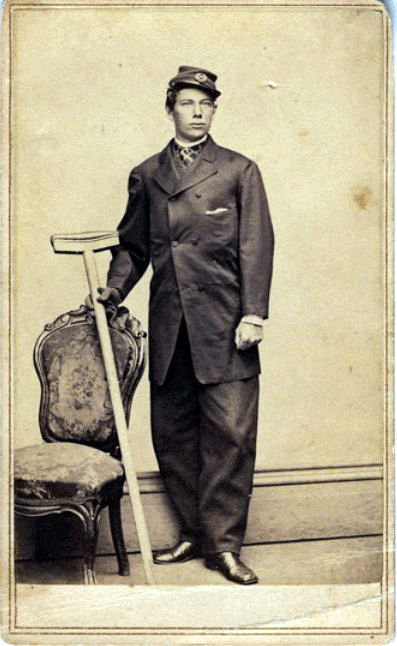 Portable
Portraits Portable
Portraits
QUESTION:
I’ve noticed
photographic portrait cards of Civil War soldiers at flea markets and
antique shows. Are these good to collect or do people buy them just to
add ambiance to their antique decorating?
Thanks,
Frank__________________________________________________________
ANSWER:
The portrait cards you’ve been seeing at flea
markets and antique shows, known as carte de visites, are,
indeed, highly collectible, especially if they’re photographs of
someone special or famous.
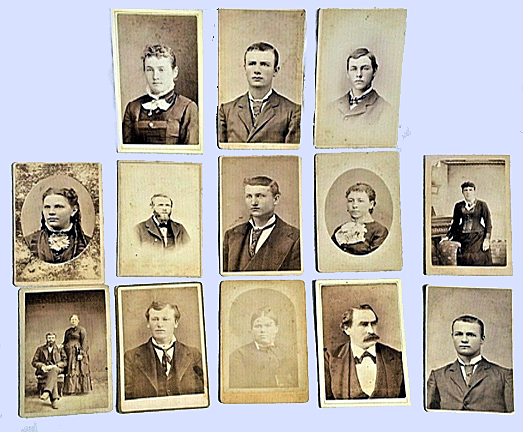
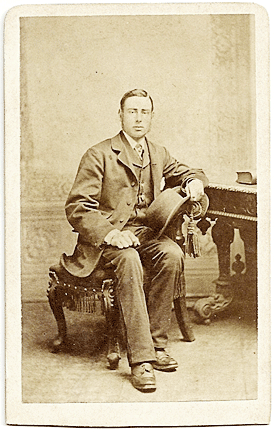 Parisian
photographer, André Adolphe Eugène Disderi, patented the first carte de
visites, literally meaning “visiting cards,” in 1854. Each card, onto
which the photographer pasted a small albumen print, measured 2-1/2 x 4
inches. They became all the rage for several decades during and after
the Civil War, both here and abroad. However, Disderi's format didn’t
become widely used until nearly five years after he patented it. Parisian
photographer, André Adolphe Eugène Disderi, patented the first carte de
visites, literally meaning “visiting cards,” in 1854. Each card, onto
which the photographer pasted a small albumen print, measured 2-1/2 x 4
inches. They became all the rage for several decades during and after
the Civil War, both here and abroad. However, Disderi's format didn’t
become widely used until nearly five years after he patented it.
But once his format caught on, it became an international standard. For
the first time, people could exchange portraits, which they could then
place into matching slots in specially made carte de visite photo
albums. It didn’t matter where the recipient lived since they could
purchase these albums everywhere. Another advantage to carte de visites
was that people could mail them to each other. Usually each print came
with a special mailing envelope, making it easy for the sender to just
address it and pop it into the mail. Earlier daguerreotype and ambrotype
photographs, both done on glass plates, required the sender to package
them in bulky boxes with sufficient packing to prevent breakage during
shipment. And because of their small size, carte de visites were also
somewhat inexpensive.
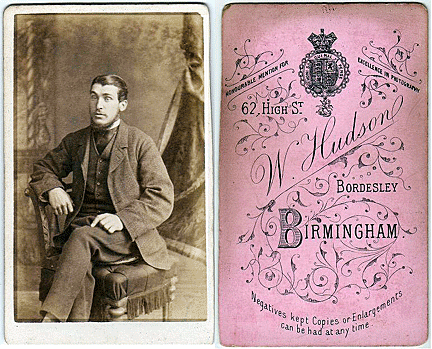
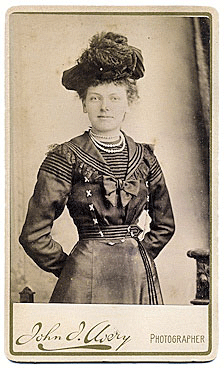 Before
the advent of carte de visites, people exchanged elaborate calling cards
with their names engraved in decorative fonts. During the decade before
the Civil War, it was the custom for a person to present his or her
calling card whenever they visited someone. Life was very formal at the
time, and no one received anyone they didn’t know without a calling
card. Most people had a small basket or box in their parlor in which
visitors could place their cards. A few photographers created and sold
special photographic calling cards, but these weren’t standardized. Before
the advent of carte de visites, people exchanged elaborate calling cards
with their names engraved in decorative fonts. During the decade before
the Civil War, it was the custom for a person to present his or her
calling card whenever they visited someone. Life was very formal at the
time, and no one received anyone they didn’t know without a calling
card. Most people had a small basket or box in their parlor in which
visitors could place their cards. A few photographers created and sold
special photographic calling cards, but these weren’t standardized.
Using Disderi's method, a photographer could take eight negatives on a
single 8 x 10-inch glass plate using a sliding plate holder and a camera
with four lenses. That allowed him to make eight copies of the person’s
portrait each time he printed the negative. This reduced production
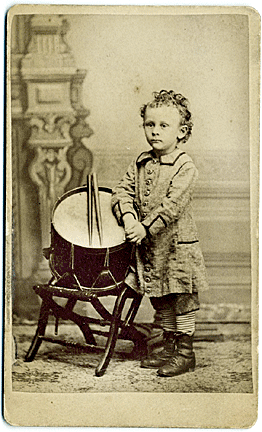 costs
and allowed photographers to sell carte de visites at a reasonable
price. costs
and allowed photographers to sell carte de visites at a reasonable
price.
People were slow to purchase these new photo cards. However, legend says
that after Disdéri published Emperor Napoleon III's photos in this
format, the cartes gained widespread popularity.
Historians believe C. D. Fredericks introduced the carte de visite to
the U.S. in New York late in the summer of 1859. After carte de visites
of Abraham Lincoln went on sale, they caught on like wildfire as
soldiers and their families posed for them before war or death separated
them. Carte de visites of famous people, like Ulysses S. Grant, became
an instant hit, as people began collecting celebrity portraits of the
time.
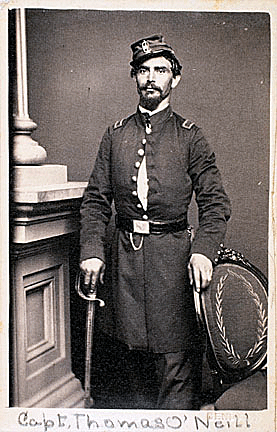 Civil
War photographs are extremely collectible and have crossover appeal to
collectors of both military and early photographs. From 1861 to 1865,
the most method of portraiture was the tin-type and the carte de visite. Civil
War photographs are extremely collectible and have crossover appeal to
collectors of both military and early photographs. From 1861 to 1865,
the most method of portraiture was the tin-type and the carte de visite.
John L. Gihon of Chestnut St. in Philadelphia, was a portrait
photographer who captured images of soldiers and prisoners at Fort
Delaware off the shore of Delaware City, Delaware. His carte de visites
eventually led to the production of early baseball cards for the
Philadelphia Athletics in the 1870s. He died of an illness at only 39.
Gihon charged his customers $2.50 for a sitting and six cards.
These little portraits were very important to Civil War soldiers. Since
those, especially the Confederate prisoners, at Fort Delaware had to
make do with what they had, they, usually officers, often borrowed
pieces of uniforms, especially hats, and props, including swords, belts,
sashes, from others confined with them so that they would appear as
finely dressed as possible.
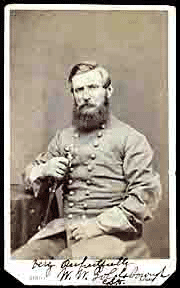 Prices
of collectible carte de visites vary on condition, pose and subject. A
carte de visite of surgeon Robert Hubbard, 17th Connecticut Infantry
Volunteers, sold at auction for $374. Hubbard enlisted as surgeon of the
regiment in August 1862 and became the acting medical director during
the Battle of Gettysburg. He resigned in Dec. 1863. Prices
of collectible carte de visites vary on condition, pose and subject. A
carte de visite of surgeon Robert Hubbard, 17th Connecticut Infantry
Volunteers, sold at auction for $374. Hubbard enlisted as surgeon of the
regiment in August 1862 and became the acting medical director during
the Battle of Gettysburg. He resigned in Dec. 1863.
A carte-de-visite of Dr. Mary Walker, taken by noted London photographer
Elliott & Fry sold at auction for $1,380. She graduated from Syracuse
Medical College in 1855 and was an author and early feminist who gained
distinction during the Civil War as a humanitarian, surgeon, and spy.
Congress awarded her the Congressional Medal of Honor in January 1866 on
the personal recommendation of General Sherman. She refused to part with
it when Congress revoked it for “unusual circumstance” in 1917. Dr.
Walker died in 1919, but it wasn’t until 1977 when President Carter
officially reinstated the award.
Collectors can find a variety of carte de visites both at flea markets
and antique shows and in some antique shops and online. Prices vary from
a few dollars to several thousand. They’re great items to collect,
especially if a collector can find the special albums to hold them,
often sold with their carte de visites removed.
<
Back to Readers Ask Archives
Next Article
> |
